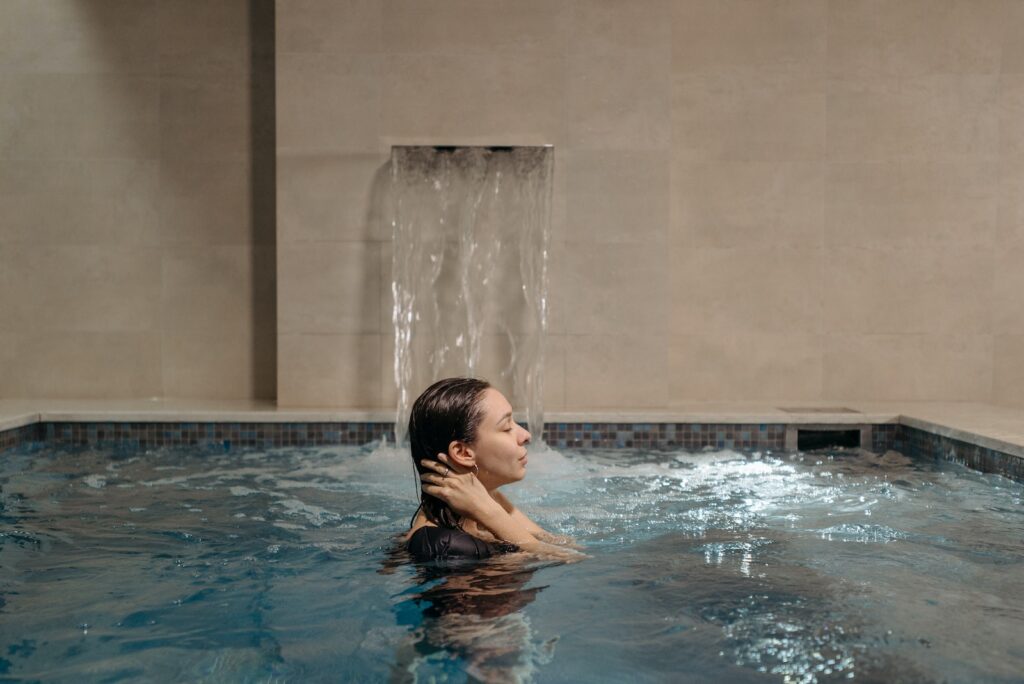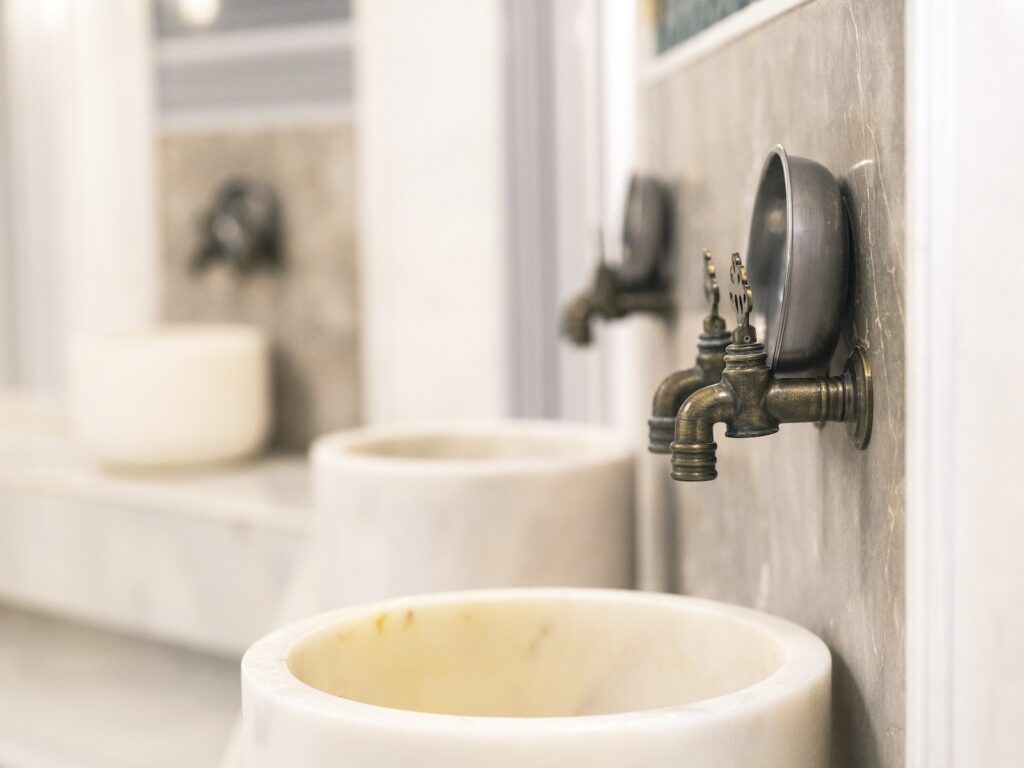Turkish baths, also known as hammams, have been a significant part of Turkish culture for centuries. Rooted in the ancient Roman and Byzantine bathing traditions, hammams have evolved to become an essential aspect of Turkish self-care and social life. In this article, we will explore the history of Turkish baths, how they work, and their unique features that distinguish them from other types of baths and saunas.


The History of Turkish Baths
Turkish baths have their origins in the ancient Roman and Byzantine bathing traditions, which were later adopted by the Ottoman Empire. Over time, these bathing practices were refined and transformed into the hammam, a space that served both as a place for physical cleansing and social interaction. Turkish baths became prominent during the Ottoman period, particularly in Istanbul, where they were considered an essential part of daily life.
How do Turkish Baths Work?
A typical Turkish bath consists of three main sections: the hot room, the warm room, and the cool room. The hot room, also known as the “sıcaklık,” is where bathers begin their journey, acclimating to the heat and steam while lying on a heated marble slab called “göbek taşı.” The warm room is the transitional space for washing, scrubbing, and rinsing, while the cool room is where bathers can relax, drink tea, and socialize.
The Hammam Experience
Upon entering a Turkish bath, visitors are typically given a peshtemal, a traditional Turkish towel, to wear during their visit. The bathing ritual begins in the hot room, where bathers sweat and open their pores. An attendant, known as a “tellak,” then performs a vigorous scrub using a kese mitt, followed by a luxurious soap massage. Finally, bathers are rinsed with cold water and led to the cool room to relax and unwind.


Health Benefits of Turkish Baths
Turkish baths offer numerous health benefits, including:
- Improved circulation
- Detoxification through sweating
- Relief from muscle tension and joint pain
- Exfoliation of dead skin cells
- Enhanced relaxation and stress reduction
Turkish Baths vs. Saunas
While Turkish baths and saunas both aim to promote relaxation and well-being, they differ in several ways. Turkish baths focus on water and steam, with the bathing ritual involving washing, scrubbing, and massaging. In contrast, saunas are typically dry or slightly humid, with heat generated by a stove or infrared lamps. Saunas are primarily used for relaxation and sweating, without the additional cleansing and social aspects of Turkish baths.
Turkish Bath Etiquette
When visiting a Turkish bath, it’s essential to observe proper etiquette. This includes wearing the provided peshtemal, respecting the privacy of others, and maintaining a quiet, tranquil atmosphere. Some hammams also have designated hours or separate sections for different genders. Be sure to follow any posted rules or guidelines to ensure a comfortable and enjoyable experience for individuals of all gender identities.


How to Properly Use a Turkish Bath
To make the most of your Turkish bath experience, follow these steps:
- Begin in the hot room, lying on the göbek taşı to allow your body to acclimate to the heat and humidity.
- After 10-15 minutes, the tellak will scrub your body with a kese mitt, removing dead skin cells.
- Enjoy a foamy soap massage, which will help relax your muscles and stimulate blood circulation.
- Rinse with cool water, removing all soap and foam from your body.
- Proceed to the cool room to relax, hydrate, and socialize. You may also be offered tea or other beverages.
Precautions Before Visiting a Turkish Bath
Before visiting a Turkish bath, consider the following precautions:
- Consult with your doctor if you have any health concerns, such as heart conditions, high blood pressure, or skin issues.
- Stay hydrated before, during, and after your visit to avoid dehydration.
- Avoid consuming a heavy meal or alcohol before your visit.
- Pregnant women and individuals with compromised immune systems should consult their healthcare providers before visiting a hammam.
Finding Authentic Turkish Baths
To find an authentic Turkish bath, do some research and look for establishments with a reputation for quality and tradition. In Turkey, particularly in Istanbul, there are numerous historic hammams that have been operating for centuries. You can also search online for reviews and recommendations from locals and travelers alike.
Conclusion
Turkish baths are an integral part of Turkish culture and a unique experience that offers relaxation, rejuvenation, and social interaction. By following proper etiquette and precautions, you can fully immerse yourself in the rich tradition of the hammam and enjoy its numerous health benefits.
FAQs
Most Turkish baths provide a peshtemal, a traditional Turkish towel, for you to wear during your visit. You may also choose to wear a swimsuit underneath for additional comfort and modesty.
A typical Turkish bath experience can last anywhere from one to two hours, depending on your preference and the services offered.
It is best to consult your healthcare provider before visiting a Turkish bath if you have a medical condition or concerns about your health.
Turkish baths can be suitable for children, but it is important to consider their age, comfort level, and ability to follow the bathhouse rules. Some hammams may have age restrictions, so it’s best to check with the specific establishment before visiting with children.
The health benefits of visiting a Turkish bath include relaxation, stress relief, improved circulation, muscle tension relief, and exfoliation of dead skin cells. The heat and humidity can also help clear congestion and improve respiratory function.
Pregnant women should consult their healthcare provider before visiting a Turkish bath to ensure it is safe for them and their developing baby. Some hammams may have specific guidelines or restrictions for pregnant visitors.
The frequency of visiting a Turkish bath depends on personal preference and individual needs. Some people may enjoy the benefits of a hammam visit once a week, while others may prefer a monthly visit. It’s important to listen to your body and consider your health when determining how often to visit a Turkish bath.
Some Turkish baths may allow you to bring your own soap and shampoo, but it is best to check with the specific establishment beforehand. Many hammams provide traditional olive oil soap and other amenities for their guests.
Authentic Turkish baths maintain high standards of hygiene, with regular cleaning and sterilization of facilities. However, it’s important to do your research and choose a reputable establishment with a commitment to cleanliness and customer safety.